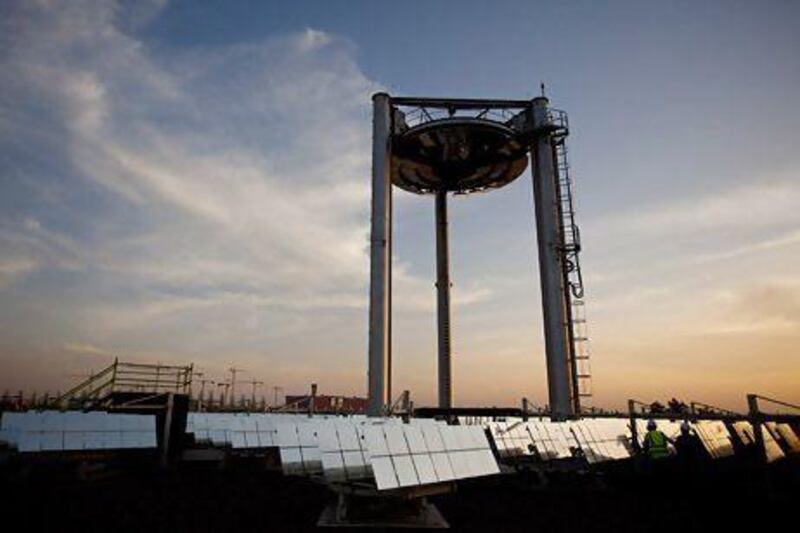A Google search for Masdar UAE yields more than two million hits; a search for Enec UAE, the Emirates Nuclear Energy Corporation, just 19,000. Abu Dhabi's renewable energy ambitions have attracted the world's attention in a way that its nuclear power plans have not.
But for the country's future energy and environmental needs, the plant now taking shape at Baraka in the Western Region is more important than the solar panels at Masdar City.
Construction began on the first reactor last July, and last week Enec applied for a licence to build the third and fourth. The first reactor should begin generating power in 2017, easing an uncomfortable crunch in the UAE's gas supplies.
By 2020, Abu Dhabi's planned solar power should save about 1 million tonnes of carbon dioxide emissions (the Emirates as a whole produces about 227 million tonnes of the global warming gas annually). By comparison, Baraka could make a quantum leap, cutting some 16 million tonnes.
Not only is the nuclear plant almost four times as large as the planned solar installations, but it will operate virtually all the time - while solar panels average only a fifth of their rated capacity, yielding less in the winter, dawn and dusk, and nothing at night.
The big challenge will be to avoid the massive cost overruns and delays that have plagued plants in France, Finland, the United States and elsewhere. Inevitably, Enec too will face snags along the way. But if its reactors come in around budget, their electricity will be cheaper than that from solar power.
This is not a criticism of solar power, which has an exciting future in the Arabian Gulf.
The costs of solar panels are falling all the time; they can be installed quickly and flexibly. Renewable and nuclear power are not alternatives for the UAE - they are complementary. Enec will provide steady baseload supply, perhaps ultimately up to 40 per cent of capacity, while solar meets daytime peaks. Of all the Middle Eastern countries, the UAE has the best blend of political relations, money, economic rationale, public support and organisational competence to make a success of nuclear power. It has taken great pains to stress the peaceful nature of its programme and to agree to international safeguards.
But the future of nuclear power is less clear elsewhere in the region - politically explosive and a hot issue environmentally. Kuwait, which has foresworn nuclear, points out that Iran's Bushehr plant is closer to Kuwait City than Tehran, and lies in an earthquake-prone region.
Energy-poor Jordan has keenly pursued both solar and nuclear power - it has some uranium resources of its own.
But the nuclear plant has been held back by concerns over safety and water, by Jordanian environmentalists, and the sheer price tag.
Similarly, Egypt's relaunch of its nuclear power programme is almost laughably optimistic amid the current political and financial turmoil.
Saudi Arabia's ambitious nuclear plans are vital for its future energy supply - with rising oil consumption and gas failing to keep up with demand. But the kingdom has a large technological and managerial gap to close, making the target date of 2019 for its first reactor wildly over-ambitious. And it suffers from the perception that its civilian nuclear power programme is at least partly intended as a signal to Iran over Tehran's alleged pursuit of nuclear weapons.
Given such radioactive concerns - political, environmental and budgetary - Enec has probably been wise to keep a low profile.
But if all goes well, as its electrons enter the grid in 2017, Baraka could become the UAE's top future energy champion.
Robin Mills is the head of consulting at Manaar Energy, and author of The Myth of the Oil Crisis and Capturing Carbon





